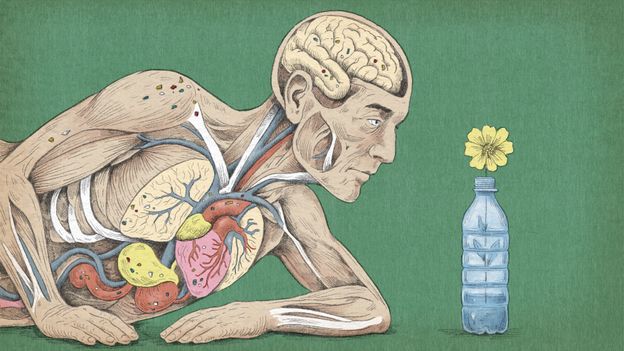The Silent Invasion: How Microplastics Are Impacting Your Health (and What You Can Do)

Microplastics are plastic particles less than 5 millimeters in size. They originate from a variety of sources, including the breakdown of larger plastic debris (like plastic bags and bottles), synthetic textiles (shedding fibers during washing), and microbeads found in some personal care products. They're pervasive in the environment, finding their way into our water supply, soil, and ultimately, our food chain.
Recent studies have revealed a surprisingly widespread distribution of microplastics within the human body. Researchers have detected them in:
- Lungs: Inhaled from the air, microplastics can lodge in lung tissue.
- Blood: Microplastics have been found circulating in the bloodstream, potentially impacting various organs.
- Organs: Studies have identified microplastics in the liver, kidneys, and spleen.
- Bones: Perhaps most concerning, microplastics have been discovered within bone marrow, suggesting long-term accumulation.
While research is still ongoing, the potential health impacts of microplastic exposure are a growing concern. Here's what scientists are investigating:
- Inflammation: Microplastics can trigger inflammatory responses in the body, potentially contributing to chronic diseases.
- Chemical Exposure: Many plastics contain harmful chemicals like BPA and phthalates, which can leach out and disrupt hormones. Microplastics can act as carriers for these chemicals, increasing exposure.
- Cellular Damage: Sharp-edged microplastics can physically damage cells and tissues.
- Immune System Disruption: The immune system may react to microplastics as foreign invaders, leading to immune dysfunction.
- Gut Microbiome Changes: Emerging research suggests microplastics can alter the composition and function of the gut microbiome, impacting digestion and overall health.
While completely eliminating microplastic exposure is nearly impossible, there are steps you can take to reduce your risk:
- Filter Your Water: Use a water filter that removes microplastics.
- Choose Natural Fabrics: Opt for clothing made from natural fibers like cotton, linen, and wool.
- Wash Synthetic Clothes Less Frequently: When you do wash them, use a laundry bag designed to catch microfibers.
- Avoid Products with Microbeads: Check the ingredient lists of personal care products.
- Reduce Your Plastic Consumption: Choose reusable alternatives to single-use plastics.
- Support Research: Advocate for more research into the health effects of microplastics.
The field of microplastic research is rapidly evolving. Scientists are working to better understand the long-term health consequences of exposure, develop more effective detection methods, and explore ways to remediate microplastic pollution. Staying informed and taking proactive steps to reduce your exposure is crucial for protecting your health in the age of microplastics.






